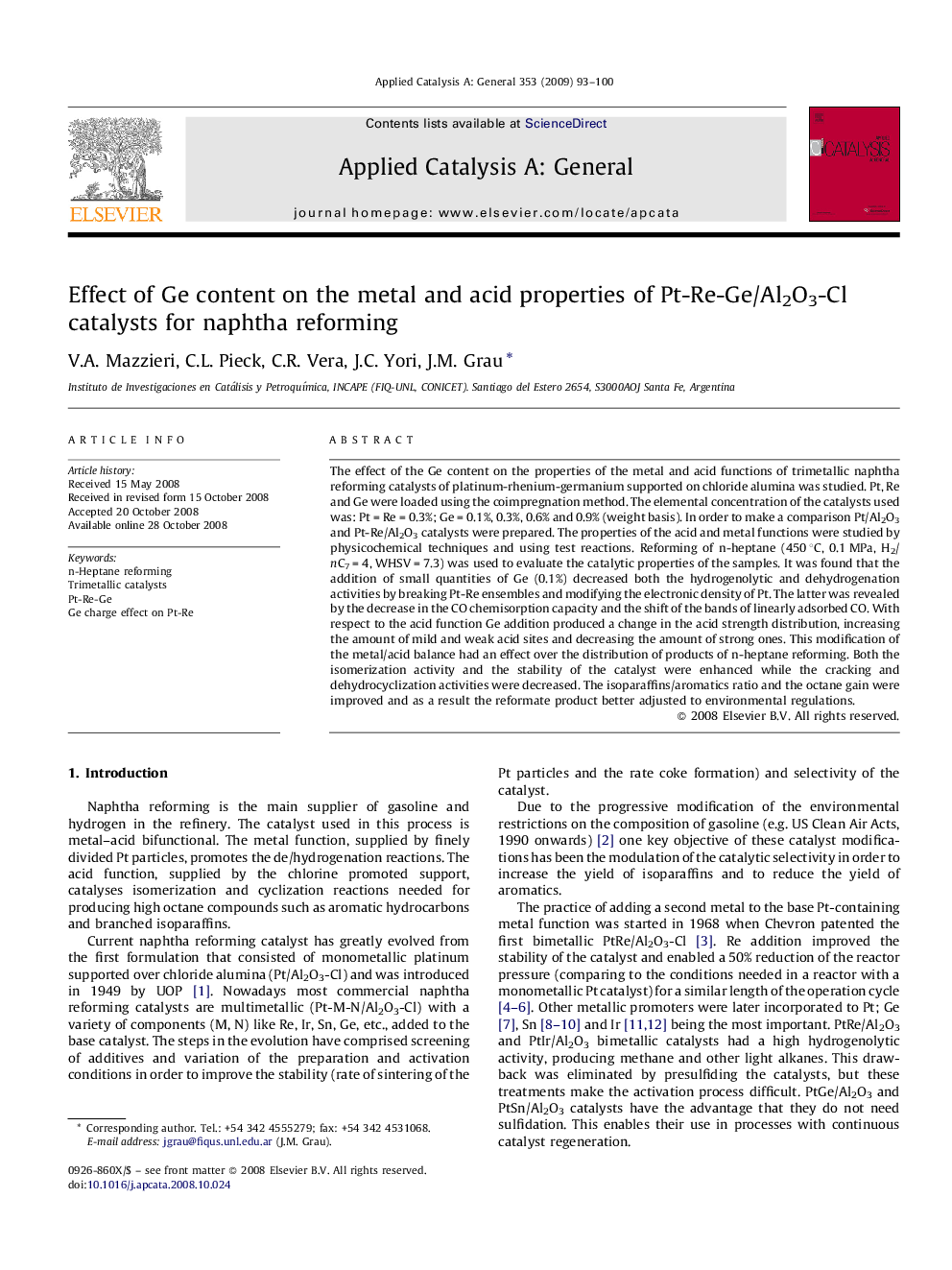| Article ID | Journal | Published Year | Pages | File Type |
|---|---|---|---|---|
| 43084 | Applied Catalysis A: General | 2009 | 8 Pages |
The effect of the Ge content on the properties of the metal and acid functions of trimetallic naphtha reforming catalysts of platinum-rhenium-germanium supported on chloride alumina was studied. Pt, Re and Ge were loaded using the coimpregnation method. The elemental concentration of the catalysts used was: Pt = Re = 0.3%; Ge = 0.1%, 0.3%, 0.6% and 0.9% (weight basis). In order to make a comparison Pt/Al2O3 and Pt-Re/Al2O3 catalysts were prepared. The properties of the acid and metal functions were studied by physicochemical techniques and using test reactions. Reforming of n-heptane (450 °C, 0.1 MPa, H2/nC7 = 4, WHSV = 7.3) was used to evaluate the catalytic properties of the samples. It was found that the addition of small quantities of Ge (0.1%) decreased both the hydrogenolytic and dehydrogenation activities by breaking Pt-Re ensembles and modifying the electronic density of Pt. The latter was revealed by the decrease in the CO chemisorption capacity and the shift of the bands of linearly adsorbed CO. With respect to the acid function Ge addition produced a change in the acid strength distribution, increasing the amount of mild and weak acid sites and decreasing the amount of strong ones. This modification of the metal/acid balance had an effect over the distribution of products of n-heptane reforming. Both the isomerization activity and the stability of the catalyst were enhanced while the cracking and dehydrocyclization activities were decreased. The isoparaffins/aromatics ratio and the octane gain were improved and as a result the reformate product better adjusted to environmental regulations.
Graphical abstractThe effect of the Ge content on the properties of the metal and acid functions of trimetallic naphtha reforming catalysts of Pt-Re-Ge/Al2O3-Cl was studied. It was found that the addition of small quantities of Ge produce modification of the metal/acid balance an effect over the distribution of products of n-heptane reforming. Both the isomerization activity and the stability of the catalyst were enhanced while the cracking and dehydrocyclization activities were decreased. The isoparaffins/aromatics ratio was improved and as a result the reformate product better adjusted to environmental regulations.Figure optionsDownload full-size imageDownload as PowerPoint slide
